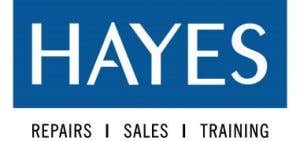How to Optimize Dental Office PPEs
The pandemic has left hospitals and dental clinics with a critical shortage of PPE. Many healthcare facilities are concerned about what will happen if there is a sudden increase in patient volume that would severely challenge or exceed the facility's present capacity. The interim guidance was developed to make the best use out of what little resources are available during these pandemic times and included prioritizing respirators before procedures that generate respiratory aerosols which present higher exposure risks to personnel in health care settings such as hospitals, doctors offices, dental offices and other medical laboratories.
If you're not using aerosol generating procedures, there are a few options that may work for your needs. You can invest in face masks or the more protective option of an enclosed shield to protect against splashes and sprays.
Respirators are useful in a protection of oneself from airborne particles that can enter your nose, mouth, and/or the lungs during procedures such as aerosol production.
In hospital settings, doctors and nurses talk about how to perform sputum induction and opening suctioning of airways. They mention that respiratory aerosols contain almost exclusively, saliva or other types of bodily fluids such as mucus. In dentistry, the patient's saliva may contain some respiratory secretions that can contain the virus if you're treating a person who is, indeed, infected.
The CDC guidance on optimization of PPE cautions that we should not extend the use or reuse disposable PPE until we’ve done everything else that we possibly can to prevent ourselves from having to do so. Examples of possible PPE optimizations include providing urgent care only, limiting people within your facility, providing telemedicine for normal consultations, limiting procedures in length to avoid the spread of oral fluids, or you may refer back to the list of guidelines on the CDC website.
Some examples optimizing the supply of PPE and equipment is to wear a surgical mask for more than one patient encounter if you’re only doing very quick procedures as long as the mask doesn’t get wet or contaminated. You can also reuse respirators as long as they maintain their fit and function, so you might practice an extended use where you put it on and leave it on.
It is important to follow the proper donning and doffing procedures when using PPE optimization strategies. This should be done when there’s an emergency critical need situation, not for routine procedures or if adequate supplies are available. Extended use can become a problem as well; it might also lead to reuse of contaminated -potentially contaminated- pieces of PPE that could pose serious consequences in the future.
Medical masks are essential for workers in dental settings, because COVID-19 is a serious disease that people don’t typically know about and these health professionals have a higher risk of being infected than others do.
Ensure that you and your dental team follows correct health, safety and infection control. Book for Hayes’ in-house and online training on the following:
Hayes also specialize in instrument sharpening & repairs. Our experienced technicians have decades of experience working with all major brands of dental handpieces including:
A-dec | Beyes | Bien Air | Denticator | Hall | Henry Schein | Impact Air | Kavo | Lares | Midwest | Morita | Nobel Biocare | Nouvag | NSK | Patterson | Schein Master | Shamrock | Star | Strauman | Stryker | W&H | Young | American Eagle | HU Friedy | Nordent | PDT




